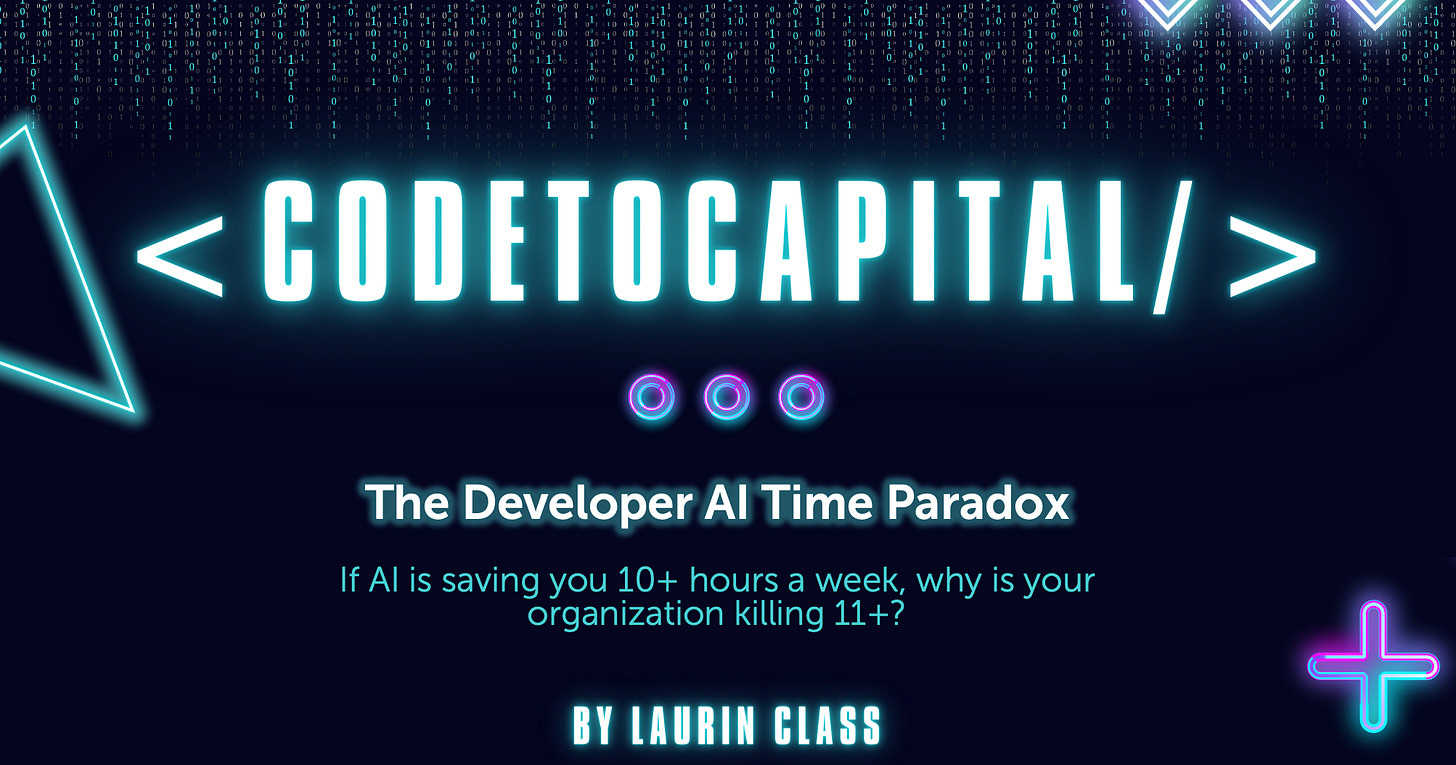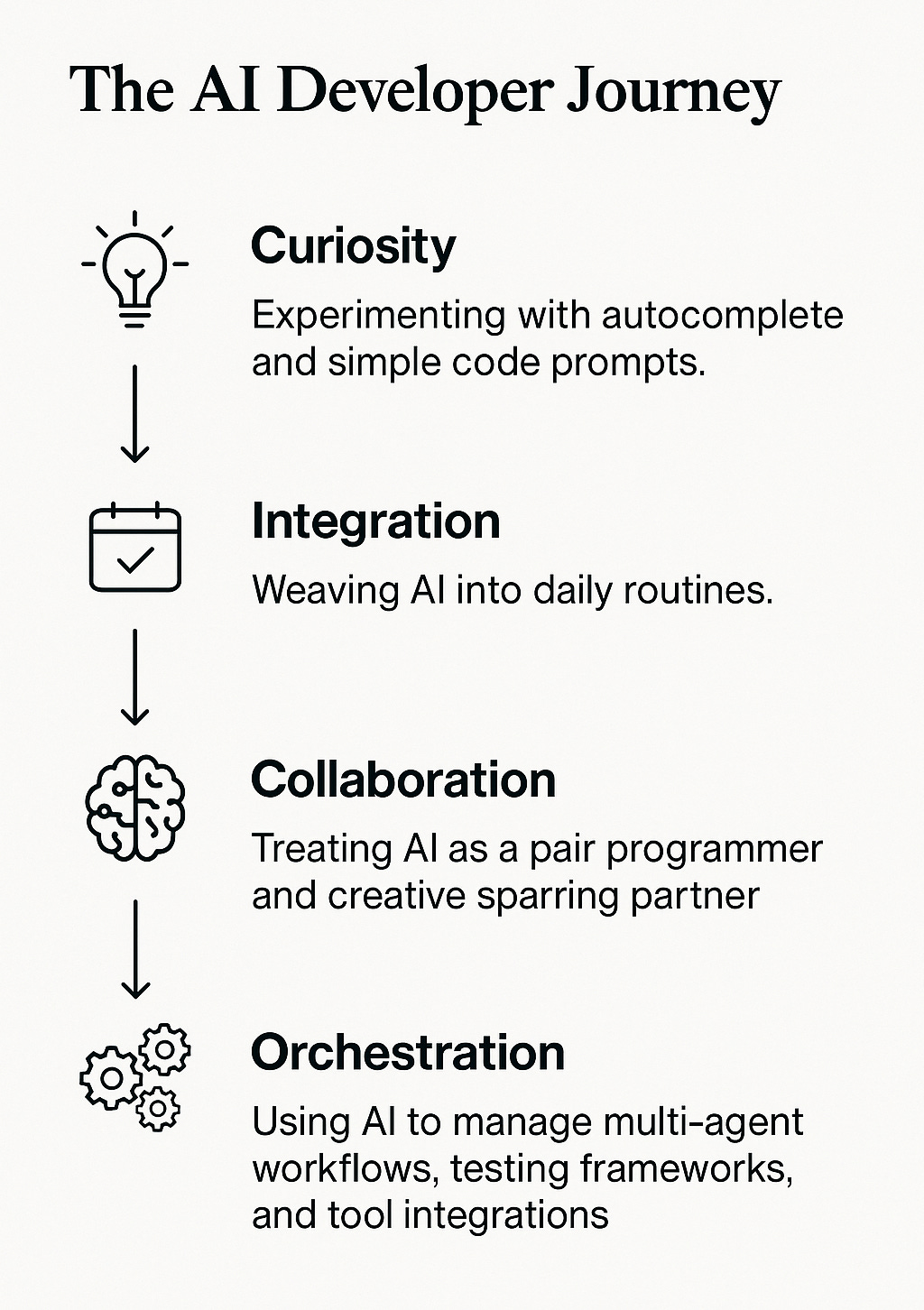The Developer AI Time Paradox
If AI is saving you 10+ hours a week, why is your organization killing 11+?
AI is supposed to be the great productivity unlock for developers. GitHub CEO Thomas Dohmke frames it bluntly: embrace AI or quit (Developers, Reinvented). Atlassian’s latest State of Developer Experience 2025 report shows the gains are real; 68% of developers now save more than 10 hours per week with generative AI. Yet, over half of them lose just as much time to organizational friction.
Could this be the Developer AI Time Paradox? We’ve accelerated the ‘easiest’ part of the job, but have we left the hardest, most time‑draining problems untouched?
The Hours Won
Generative AI has become a genuine workhorse. Developers use it not only for code generation, but also to search for information, test, improve documentation, and automate workflows. According to Atlassian, most developers put their freed‑up hours toward improving code quality, building new features, strengthening engineering culture, and creating better documentation.
Dohmke describes a journey that many AI‑native developers - those who embrace it the most and get the most out of it - follow:
Curiosity: experimenting with autocomplete and simple code prompts.
Integration: weaving AI into daily routines.
Collaboration: treating AI as a pair programmer and creative sparring partner.
Orchestration: using AI to manage multi‑agent workflows, testing frameworks, and tool integrations.
For those who commit, AI is no longer a novelty: it’s embedded in how they think and work, and they can start to truly reap the rewards of its time‑saving potential.
The Hours Lost
But here’s the rub: Atlassian’s data shows that 50% of developers lose over 10 hours each week to inefficiencies. The top friction points are the very areas where AI could help but often doesn’t:
Finding information: perhaps AI could make knowledge searchable across silos, but many teams haven’t integrated it effectively yet.
Context switching: AI assistants often remain trapped inside single tools (e.g. the IDE), limiting their impact.
Unclear direction: while AI speeds execution, it still depends heavily on clear human inputs.
Collaboration gaps: AI can assist, but it doesn’t replace genuine cross‑team alignment.
Technical debt: AI may accelerate coding, yet without process discipline, it could also multiply maintenance work.
And the biggest systemic flaw? 84% of a developer’s week is outside the IDE, yet most AI tools only address the 16% spent coding.
Closing the Gap
If we want the value of AI’s time savings to truly accrue instead of handing them straight back, we may need to look beyond just automating the fun stuff, and explore where AI can meaningfully address deeper workflow challenges.
Fix the information bottleneck: make documentation excellent, searchable, and self‑serve through integrated AI.
Redesign workflows: measure and remove friction using well-rounded, human-centered metrics rather than vanity metrics.
Build a leadership empathy loop: consistent forums for developers to surface blockers and see action taken.
Aim AI at the 84% – deploy it for documentation, meeting synthesis, knowledge retrieval, and process automation.
Protect the saved time – consciously reallocate hours to strategic initiatives, innovation spikes, or paying down tech debt.
AI’s true potential is not only in making code faster to write, it’s in making the entire system faster to work in. The tech is ready. The real question might be whether teams can channel those saved hours into meaningful, lasting impact - or if they’ll simply watch them slip away.



